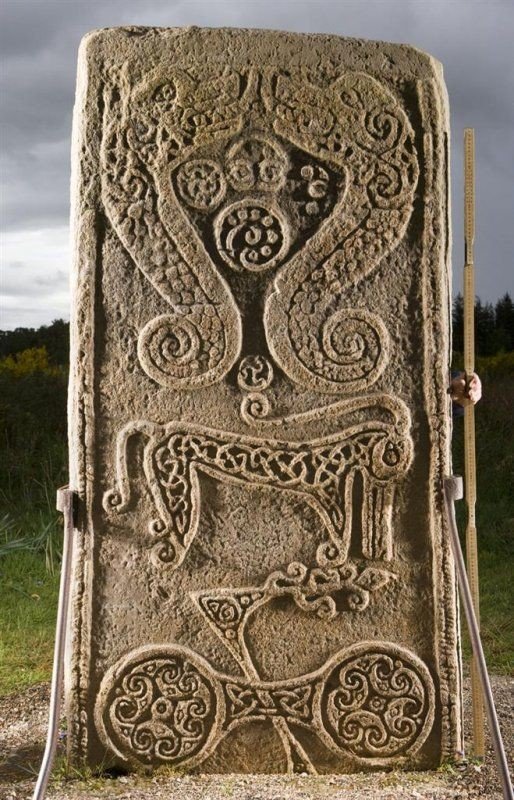Who were the Picts? And what about those tattoos?
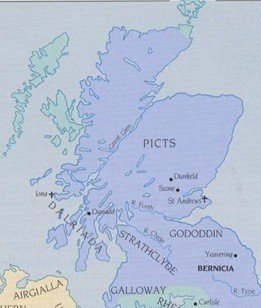
While reading about those mysterious people called “Picts,” I found out a few interesting bits that I’d like to share with my readers.
True or false? The Picts were really Caledonians, the people who later became Scoti to the Romans, and finally “Scots.” Answer: PROBABLY FALSE.
True or false? The Picts bore blue tattoos on their bodies, virtually from head to toe. Answer: MAYBE.
I realise that I’m hedging my bets here. But almost 2,000 years after the Romans wrote about those people with picti, or pictures on their body, who’s to know for sure where they came from and what those blue marks really were?
Let me begin with the first “myth”–that the Picts were really just an offshoot of the Caledoni, the tribes that the Romans found when they invaded present-day Scotland at the dawn of the first century AD.
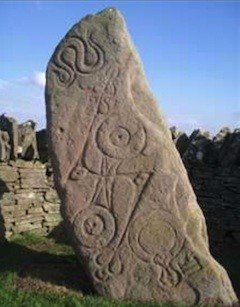
If the evolution of language is a way to trace the ancestry of a people, then perhaps it’s only a myth that our present day Scotsmen can trace their lineage to the Picts. Even though the Roman chroniclers were careful to distinguish among the people they conquered–and even those they did not–it seems that the Picts were one group of people, a distinct race, among others that the Romans found when they invaded the north of the great island of Britannia.
There is one school of thought that traces the Picts back to Iberia, the Roman’s name for modern Spain. Others think that the Picts originated in the Orkney and even the Shetland islands, two island groups that lie well north of the Scottish mainland. Could the original immigrants have come from Norway–or even Iceland and beyond–and settled in those islands, centuries before the Norsemen penetrated as far as Britannia itself?
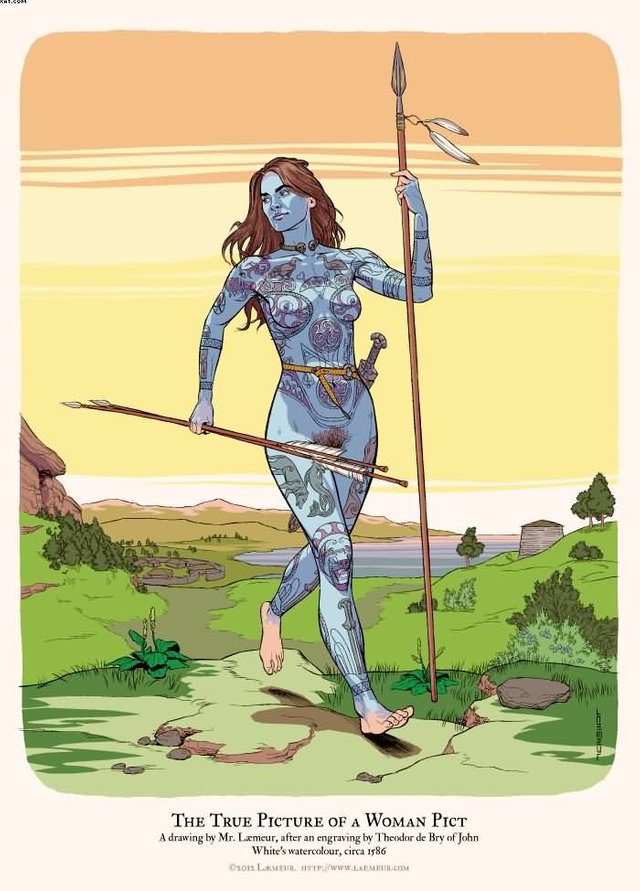
Most scholars think that the Picts were a large distinct tribe that inhabited most of present-day Scotland until about the fifth century AD. Then they began to be subsumed with the people the Romans named the Scoti, a nation of people that emigrated from the region called “Dál Riada,” encompassing the modern day Inner Hebrides and a portion of Northern Ireland, modern Co. Antrim. On the satellite image pictured here, Dál Riada is in the shaded oval. Thus the Irish Gaels merged with the Picti to form a nation called Scoti, or Scots. The term “Caledonian” seems to be almost generic, a term the Romans used to refer to anyone beyond the great walls they erected to keep the savages from penetrating the rest of Britannia.
The question that no scholars have been able to answer is this: how could such a large number of people, spread throughout thousands of miles, have virtually disappeared in a few generations? It’s possible that instead of disappearing, the hardy Picti merely intermarried with the Scoti, to form the rugged, handsome people we now call Scots.
Mind you, this is a guess. No one knows for sure. One of the greatest mysteries of the Picts is their language. Not a trace of their language remains except in stone markings called “ogham,” a language that has been traced to the so-called P-Celtic tongue. Not a trace of their widespread early culture remains except in the form of standing stones with distinctive artwork, in unearthed burrows, and in the traces of stone houses, among other remnants.

Likewise, no one really knows the truth about the famous Pictish “tattoos.”
I’m almost reluctant to use the word “tattoo,” originating as it does from Tahiti/Samoa as late as the 17th century. In fact, in a short story I wrote about a blue-marked Pict, I used the term “pricked-in” to refer to the falcon embedded on his chest, and below you’ll see why I settled on that term.
The very word “pict” derives from the term used by a Roman chronicler who thought that these people were covered with blue “pictures.” The blueness of the markings has been thought for centuries to be derived from a plant called “woad,” a member of the mustard family, whose ground roots render a distinctive blue dye.
Until recently, it was assumed that the woad plant was inserted under the skin after elaborate markings were picked, or pricked-in, with some kind of slender needle. But experiments show that first of all, the woad dye is short-lived, lasting only a week or two before it becomes so faded that it almost disappears. Second, anyone injected with woad paste or powder becomes very ill. It’s a substance that humans can hardly tolerate.
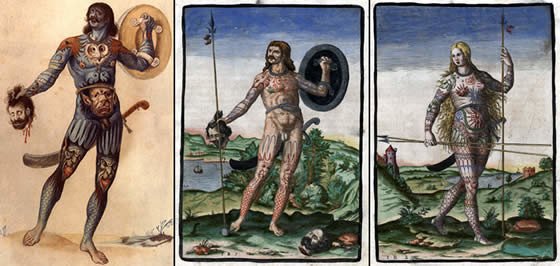
So how did the Picts make their tattoos?
Well, it’s entirely possible that the markings were not picked into their skin at all, but were painted–much the same as the Amerind “war paint.” I like to think that those who saw the distinctive blue swirls and designs were on the wrong side of the Picts’ better nature, and those marks were the sign of outright hostility–war paint, if you will.
Another plausible theory is that the blue paste worked under their skin was woad mixed with an iron-based pigment that would ensure that the marks remained, and that did not sicken the wearer.
I like to think that these ancient warriors, with a culture based on matrilineal descent, were naturally drawn to the intricate curved and geometric designs that we think of to this day as “Celtic” or “Pictish.”
